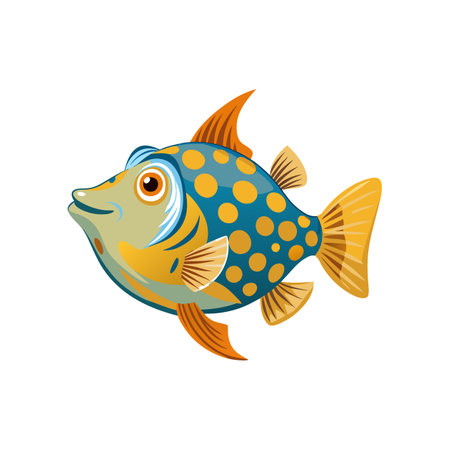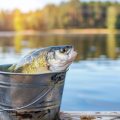Introduction to Trout Fishing in Michigan
Michigan is a true paradise for trout anglers, drawing fishing enthusiasts from across the country with its legendary streams and rivers. Known for its cold, clear waters and healthy fish populations, Michigan’s reputation as a top destination for trout fishing is well-deserved. The state’s unique geography, nestled between the Great Lakes, creates an ideal environment for trout to thrive. Whether you’re an experienced angler or just getting started, there’s something special about casting a line in Michigan’s iconic waters.
Why Michigan Stands Out for Trout Fishing
What makes Michigan so famous among trout fishermen? It’s all about variety and quality. The state boasts more than 20,000 miles of cold-water streams and countless lakes, many of which are home to wild brook, brown, and rainbow trout. With such a wide range of habitats, anglers can experience everything from remote wilderness adventures to family-friendly outings close to town.
The Significance of Blue Ribbon Streams
One of Michigan’s most prized features is its network of “Blue Ribbon” trout streams. These special waterways are recognized by the state’s Department of Natural Resources for their exceptional water quality, natural beauty, and outstanding fishing opportunities. Blue Ribbon status means strict conservation measures help maintain healthy ecosystems and robust fish populations.
What Makes a Stream “Blue Ribbon”?
| Criteria | Description |
|---|---|
| Water Quality | Pristine, cold water year-round suitable for sustaining wild trout populations. |
| Fish Populations | Abundant numbers of wild or naturally reproducing trout. |
| Accessibility | Accessible to the public with managed access points. |
| Habitat Conservation | Protected areas ensuring long-term sustainability for wildlife and anglers alike. |
A Premier Destination for Anglers
Michigan’s commitment to conservation and its vast network of Blue Ribbon streams make it one of America’s premier trout fishing states. From the iconic Au Sable River to the picturesque Pere Marquette, each waterway offers its own unique experience. Whether you’re after trophy-sized browns or looking for a peaceful day on the water surrounded by nature, Michigan delivers unforgettable moments for every angler.
2. Understanding Blue Ribbon Trout Streams
Michigan is renowned for its exceptional trout fishing, and one of the highest honors a stream can receive here is the “Blue Ribbon” designation. But what does this label mean, and why should anglers care about it?
What is a Blue Ribbon Trout Stream?
The Blue Ribbon Trout Stream designation is awarded by the Michigan Department of Natural Resources (DNR) to streams that offer outstanding trout fishing opportunities. These streams are recognized for their high water quality, natural reproduction of trout, and healthy aquatic habitats. For anglers, this means you’re likely to find strong fish populations and an exciting fishing experience.
Why Does This Designation Matter?
This status isn’t just about bragging rights. It serves important conservation purposes and helps ensure that these streams remain productive for years to come:
- Conservation Focus: Blue Ribbon streams receive special management attention to maintain their natural character and ecological health.
- Fishing Quality: Anglers can expect excellent fishing conditions, often with a mix of wild and stocked trout.
- Public Access: These waters typically offer good public access, making them great choices for both locals and visitors.
How Does a Stream Become Blue Ribbon?
The DNR uses several criteria to evaluate whether a stream deserves Blue Ribbon status. Here’s a quick look at what they consider:
| Criteria | Description |
|---|---|
| Water Quality | Clean, cold water is essential for healthy trout populations. |
| Trout Population | The stream must support naturally reproducing trout or have robust populations. |
| Habitat Quality | Diverse in-stream habitat like riffles, pools, and cover for fish. |
| Public Access | Sufficient public land or easements allow anglers to enjoy the resource. |
| Recreational Value | The stream should offer a satisfying fishing experience for all skill levels. |
The Takeaway for Anglers
If you’re planning a trout fishing adventure in Michigan, seeking out Blue Ribbon streams is a smart move. These waters are managed for quality and conservation, offering some of the best trout fishing experiences in the state.
![]()
3. Top Trout Rivers and Streams
Michigan is a trout angler’s paradise, famous for its pristine Blue Ribbon waters. If you’re planning a fishing trip in the state, these legendary rivers should be at the top of your bucket list. Let’s dive into the local favorites—the Au Sable, Pere Marquette, and Manistee rivers—and share some insider tips and fun pieces of Michigan fishing lore.
Must-Visit Blue Ribbon Waters
| River Name | Location | Notable Features | Insider Tips |
|---|---|---|---|
| Au Sable River | Northern Lower Peninsula | Crisp cold water, classic fly-fishing hatches, scenic woodlands | Best fished during the Hex hatch in June; try “Holy Waters” section for wild browns |
| Pere Marquette River | Western Lower Peninsula | First river stocked with brown trout in America; lots of bends and deep pools | Popular for year-round action; swing streamers at sunrise or sunset for big fish |
| Manistee River | Northwestern Lower Peninsula | Diverse trout population, long stretches of public access, crystal-clear waters | Fish below Tippy Dam for rainbows and browns; wade quietly to avoid spooking trout |
The Au Sable River: Michigan’s Crown Jewel
The Au Sable is legendary among anglers, especially the “Holy Waters” stretch near Grayling. This section is catch-and-release only, keeping it full of wild brown trout. Local lore says that Ernest Hemingway fished here as a young man and drew inspiration for his stories. The river is famous for epic insect hatches—if you’re there in June, don’t miss the giant Hexagenia mayfly hatch at dusk.
Pere Marquette River: Birthplace of American Brown Trout Fishing
This river made history as the first place in the U.S. to receive brown trout eggs from Germany back in 1884. The Pere Marquette’s winding channel and lush banks make it perfect for float trips or wading. Locals recommend trying a night-fishing session with mouse patterns to tempt trophy browns when the summer heat drives them to feed after dark.
Manistee River: Where Variety Meets Beauty
The Manistee River offers something for everyone—from beginners to seasoned pros. With stretches of public land and easy access points, it’s great for DIY trips. Fish near Tippy Dam for a shot at rainbows, browns, and even steelhead during their spring run. A tip from Michigan regulars: use light leaders and natural presentations in clear water to fool wary trout.
A Few More Local Tips:
- Respect private property: Always check signage and stick to public access points or get landowner permission.
- Check regulations: Michigan has special rules on certain stretches—review them before you go.
- Talk to locals: Bait shops and guides often know what’s hot that week—don’t be shy about asking!
- Bring bug spray: Mosquitoes can be fierce along wooded riverbanks in early summer.
Lore and Legends on Michigan’s Waters
You’ll hear plenty of fish tales on these rivers—like the story of the “Grayling Ghost,” a legendary trout said to haunt the upper Au Sable. Whether you believe the myths or not, one thing is sure: Michigan’s Blue Ribbon streams promise unforgettable days on the water.
4. Seasonal Strategies and Techniques
Michigan’s blue ribbon trout waters offer unique challenges and opportunities throughout the year. Understanding how the seasons affect trout behavior, water conditions, and hatches can make all the difference in your fishing success. Here’s a guide to help you pick the right time, bait, flies, and techniques for every season.
Best Times to Fish for Trout in Michigan
| Season | Prime Months | Fishing Highlights |
|---|---|---|
| Spring | April – June | Active feeding after ice-out; great bug hatches |
| Summer | July – August | Early morning and late evening bites; terrestrial insects become important |
| Fall | September – November | Brown trout spawn; aggressive strikes on streamers |
| Winter | December – March | Slow fishing; focus on deep pools during warm spells |
Popular Fly Patterns by Season
| Season | Go-To Flies | Description/Why They Work |
|---|---|---|
| Spring | Blue Wing Olive, Hendrickson, Caddis Nymphs | Mimic natural hatches; trout are hungry after winter |
| Summer | Hoppers, Ants, Elk Hair Caddis, Tricos | Imitate terrestrials falling into streams; dry fly action peaks |
| Fall | Muddler Minnow, Woolly Bugger, Egg Patterns | Larger streamers trigger aggression during spawning; egg patterns attract post-spawn fish |
| Winter | Zebra Midge, Scud, Small Streamers | Tiny nymphs match winter insect life; slow presentation is key in cold water |
Bait Choices and Gear Tips for Michigan Waters
- Bait:
- Naturals: Worms and waxworms work well in spring and fall.
- Scented Baits: Salmon eggs and PowerBait are go-to options for stocked rivers.
- Lures: Spinners and small crankbaits are effective year-round but especially good when water is stained from spring rains.
- Bread or Corn: Sometimes productive in heavily fished areas or near bridges where fish see a lot of anglers.
- Tackle:
- Lighter rods (2-6 lb test line) are ideal for most Michigan trout streams.
- Sneak up on clear water trout: Use longer leaders and more natural presentations during summer low flows.
- Casting upstream or across current: Mimics natural food drift and helps avoid spooking fish.
- Catch-and-release gear: Barbless hooks and rubber nets help preserve Michigan’s wild trout populations.
Tactics to Match the Michigan Seasons
Spring Tactics: Follow the Hatches
The first big insect hatches of the year bring trout out of winter sluggishness. Watch for rising fish during mayfly or caddis hatches and match your fly size and color to what’s coming off the water. Dead-drift nymphs through riffles or swing streamers along undercut banks as water warms up.
Summer Tactics: Think Like a Bug
The dog days mean wary trout. Fish early or late when temperatures are cooler. Try casting grasshopper or ant patterns near grassy banks—especially on windy days when real bugs blow onto the water. Don’t ignore shade under overhanging trees or deeper holes where trout hide from bright sun.
Fall Tactics: Big Streamers for Big Browns
This is prime time for trophy brown trout. Fish larger streamers imitating minnows or sculpins through deeper pools and along structure. Egg patterns shine below spawning beds as rainbows feed on loose eggs. Be ready for aggressive strikes!
Winter Tactics: Slow Down Your Presentation
Cold water slows everything down—including trout appetites. Focus on deep runs and pools where fish hold in slower currents. Tiny nymphs or small streamers retrieved slowly will produce best results during midday warm-ups.
By matching your approach to Michigan’s changing seasons—and keeping an eye on local hatch charts—you’ll boost your odds of landing beautiful wild trout on these legendary blue ribbon waters.
5. Regulations, Conservation, and Local Culture
Overview of Michigan’s Trout Fishing Regulations
Michigan has some of the best trout fishing in the country, but to keep these waters healthy and thriving, anglers need to follow state regulations. Here are some key rules that everyone should know:
Regulation Type Details Fishing License Required for all anglers aged 17 and older. Can be purchased online or at local retailers. Trout Season Varies by river and lake. Most popular streams open the last Saturday in April and close at the end of September. Bag Limits Usually 5 trout per day, but some Blue Ribbon streams have special restrictions (check local signage). Size Limits Minimum size is often 8-10 inches, but certain stretches require larger sizes for harvest. Bait Restrictions Many Blue Ribbon waters are artificial lures only to protect wild fish populations. The Importance of Conservation
Conservation is at the heart of Michigan’s trout fishing culture. Healthy trout streams depend on clean water, healthy habitats, and responsible anglers. Here’s how anglers contribute to conservation:
- Catching and releasing wild trout: Many anglers practice catch-and-release to help maintain strong fish populations.
- Protecting stream banks: Staying on designated trails prevents erosion and keeps streams clear.
- Supporting habitat restoration: Local organizations work with volunteers to restore spawning areas and plant trees along rivers.
- Reporting invasive species: Anglers help by alerting authorities if they spot unwanted plants or animals in the water.
The Role of Trout Fishing in Local Communities and Traditions
Trout fishing isn’t just a pastime in Michigan—it’s a way of life in many towns. Local festivals celebrate the opening day of trout season. Family-owned bait shops serve as gathering spots where folks share stories and tips. Guides take newcomers out on the water, passing down skills that have been honed over generations.
Traditions That Bring People Together
- Annual Trout Festivals: Small towns like Kalkaska host events every spring with parades, contests, and community dinners centered around fishing.
- Youth Programs: Many schools partner with conservation groups to teach kids about fly tying, aquatic insects, and stream health.
- Cultural Pride: Catching a trophy brown or brook trout from a famous river like the Au Sable is a source of pride for locals—and bragging rights at the diner!
The Connection Runs Deep
For many Michiganders, trout fishing connects generations—grandparents teaching grandkids how to tie on a fly or recall stories from “the big one” that got away. The respect for nature, love for the outdoors, and friendly spirit found on Michigan’s Blue Ribbon waters all play a part in making trout fishing an essential thread in the fabric of local life.


